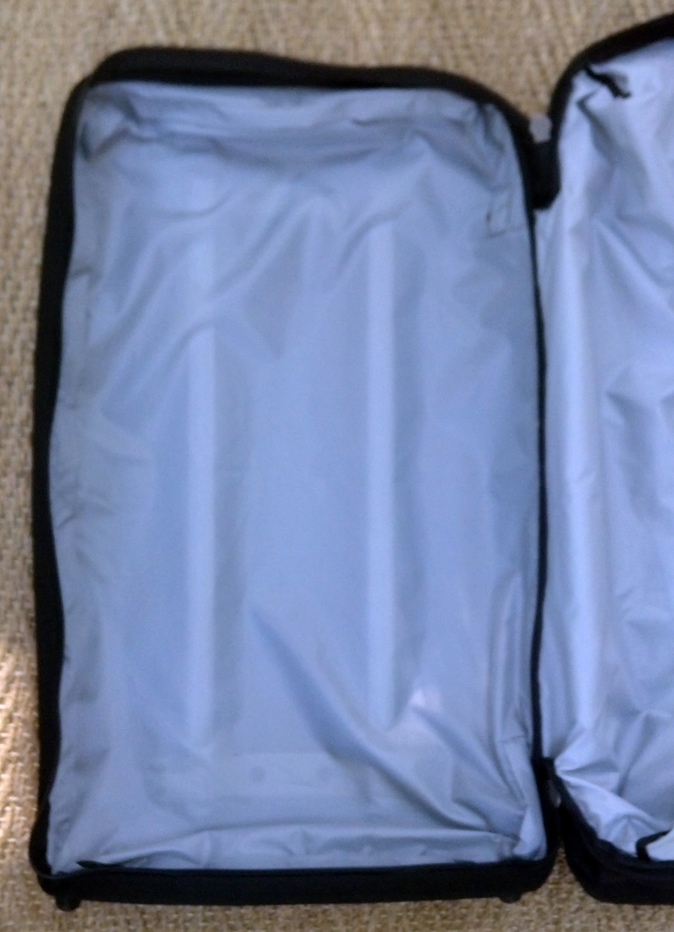When we’re not skiing, riding, or writing, we seem to do a ridiculous amount of schlepping here at BLISTER.
Piles of skis, poles, bindings, boots, avi packs, skins, goggles, pants, jackets, computers, and cameras— plus our regular street clothes and the occasional six-pack. All of it travels between New Mexico, Colorado, Wyoming, and Utah on the regular, as well as on a number of extended hauls to South America and Japan over the course of a season.
When chucking stuff in the back seat isn’t an option, a reliable gear bag can make organizing and hauling your stuff around a whole lot easier.
We’ve already reviewed the Dakine Wheeled Duffel; a large-capacity, 60L rolling bag that will serve you very well considering its reasonable $170 MSRP (and you can sometimes find them for less).
We’ve taken two of them all over the globe in the last two years, and while the bags are showing some wear and tear, they’ve got quite a few miles left in them.
So we were wondering, why would you pay any more for any other comparable bag? What is there to gain in spending a little (or a lot) more for something to haul your gear around in?
We’ve taken a look at four bags that are pretty similar to the Wheeled Duffel in every way except the asking price. We searched for four bags that closely match the Dakine’s dimensions, have wheels, and have an extendable/retractable handle—all important features in what we feel makes a good, versatile gear bag, not just your grandma’s suitcase (unless your grandma is a badass and lives in in a place like Jackson, not Punta Gorda).
First up, the Patagonia Freewheeler Max.

Features:
- Zippered main compartment
- zippered end compartment
- Interior mesh pocket
- Molded bottom chassis with separated compartment
- Batten supports on sides keep bag standing and collapse for easy storage
- Two-position retractable handle
- external compression straps
- haul handles
- 80mm wheels
Specs:
Volume: 7506 cu in [123 L]
Size: 29″ x 17″ x 15.5″ [Exterior dimensions]
Weight: 10 lbs 8 oz [4.76 kg]
Materials:
11-oz 1,200-denier 100% Recycled Polyester
Molded foam and nylon base
MSRP: $450
The first thing you’ll probably notice about this bag is the price tag. $450 is more than the other three bags we’ll be reviewing, and a whole lot more than the Dakine Wheeled Duffel.
As a college student, that price does make me wince, but I also think it’s justifiable for what you get, and that the Freewheeler Max is the best option of the four bags if you need a few of its unique features.
I’ll get to those features in a minute, but for now, here’s my take on the quality and functionality of the bag.
Materials and Durability
The build quality and materials of the Freewheeler Max are outstanding.
Over the last eleven months, I’ve wheeled this bag through bus stations and airports, dragged it through gravel, dirt, muddy-and-snowpacked parking lots, thrown it in the back of taxis, below buses, on trains, and in the bed of my truck. I haven’t strapped it to the back of an elephant on a safari, but I’d say that I—and baggage handlers around the world, plus several Argentinean K-9 units—have put this bag through its paces pretty damn well.
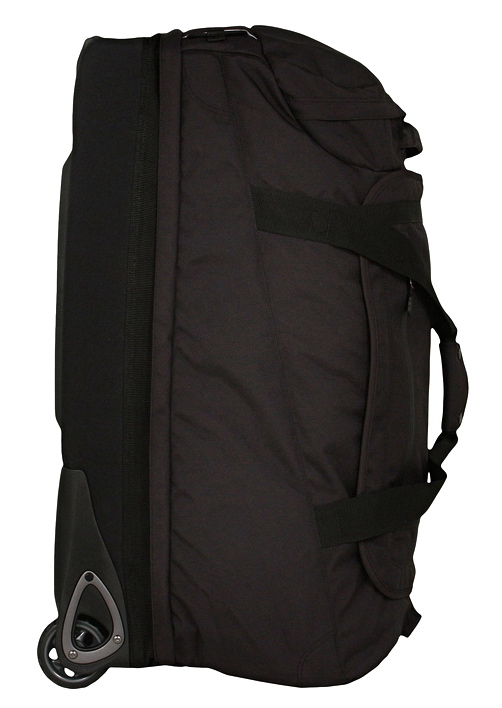
The Freewheeler Max is made from a 1200D polyester with a DWR (durable water repellent) finish that, apart from proving very tough against any pilling, scuffs and tears, seems to repel dirt, grime and water well. I’ve pulled this thing through a few rain showers and a number of winter storms, and while I wouldn’t want to trust it as waterproof, it can stand to get hit with some real moisture and keep your belongings totally dry—certainly better than your ordinary suitcase.
The lower chassis of the bag (roughly the bottom 3”), is made of firm molded-foam and ballistics-nylon. I also would have expected this to dent or scratch slightly by now, but it hasn’t. The bag’s 1200 denier polyester fabric is twice as thick and should be twice as strong as the 600D used on the Dakine bag, and I don’t doubt that’s true.
I would have been disappointed to see any significant wear on the bag at this point anyway, but I’ve been genuinely surprised at just how pristine it is. The Freewheeler Max looks the same as it did the day it arrived at BLISTER HQ, thousands of miles ago.
Notable Features of the Freewheeler Max
Our Dakine bags are fitted with smooth, skate-style wheels that have a low profile and are slotted into the chassis of the bag. They roll well though airport terminal or on blacktop, but don’t do much to help it get up a dirt driveway.
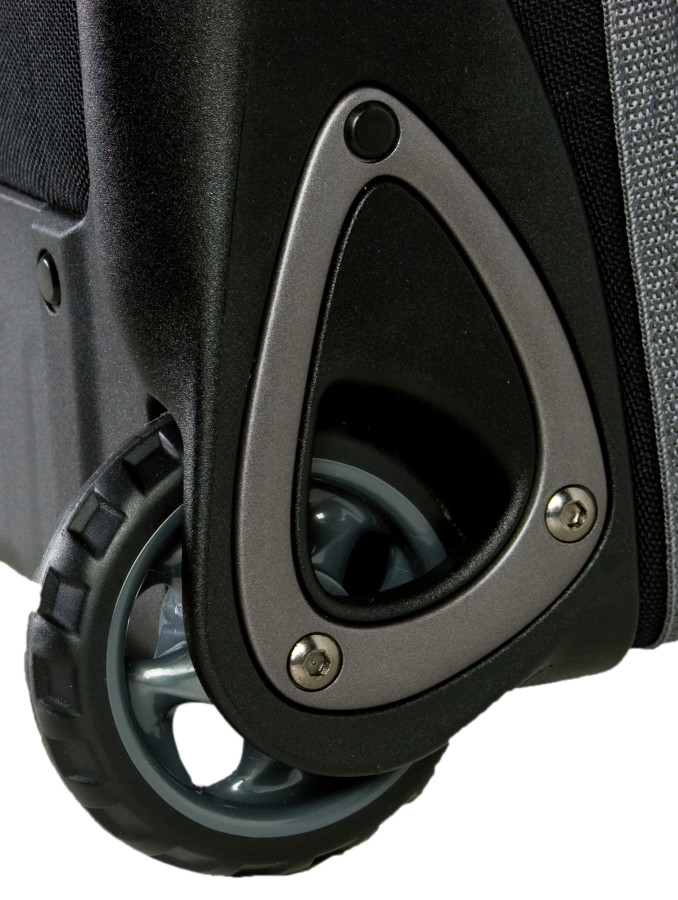
The Freewheeler Max’s wheels are quite a bit larger in diameter, and have an actual tread on them that makes off-roading your gear much easier (you’ll actually be rolling the bag most of the time, not just dragging it through the dirt).
The pull handle on the Freewheeler Max is about as well built as they come. It hasn’t developed any slop or looseness and stows easily and smoothly. I’ve hauled over 50 lbs. of gear around in this bag numerous times, and the pull handle, all of the bag’s other handles, and stitching on the bag have held up perfectly with no signs of failing any time soon.
The two halves of the main carrying handle are held together strongly by metal snaps and not once have they come undone in transit. I can’t say any of that about my Dakine bag—its velcro-closure main carry strap comes undone easily.
Thanks to a set of internal “batten supports,” the sides of the bag stay upright and loosely supported when empty, which makes organizing and packing as easy as possible (they aren’t left totally slack and loose, making it harder for you to tell how much more room you have to work with as you load your gear).
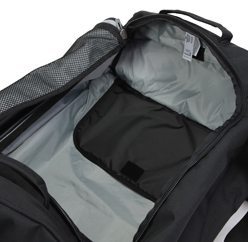
What’s really nice though, is that a rigid panel folds down from the inside of the rear wall of the bag. This allows the sides of the bag to fold and compress, aided by the outer cinch straps. This makes the bag much easier to store, and if you’re only at half-capacity, you’ll never have your gear jostling around in a bunch of empty space.
Layout / Organization
The Freewheeler Max’s compartments are few and simple, but really well thought out, proving efficient and useful for neatly packing and organizing gear and clothes.
Unlike any of the other bags we’ve reviewed, the Freewheeler Max has one large main compartment, with a separated area immediately below it.
The lower compartment is accessed by a zipper that joins the bags soft upper to the hard lower chassis. When the lower compartment is left empty, the floor material of the main compartment is allowed to extend into it. Practically speaking, this means you can maximize the bag’s huge single space, leaving no space unused, or separate some items from those in the main compartment.
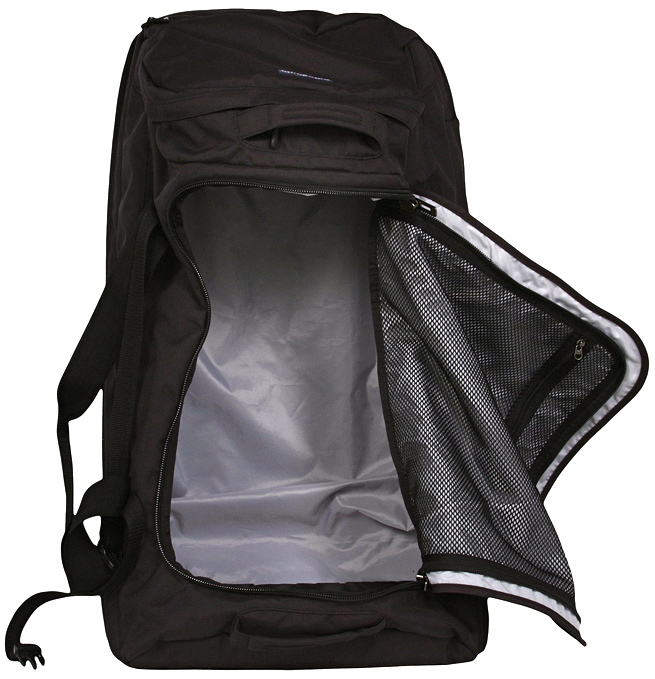
The lower compartment is great for either (a) throwing dirty clothes over the course of a trip, or perhaps more importantly, for (b) keeping dress shirts, jackets, or pants from getting wrinkled and rustled up with your other stuff. I’ve loved being able to place laundered dress clothes below, keeping them neat and away from my streetwear and other stowed gear.
I also really like having the entire width and length of the bag as a separate compartment, rather than two smaller end compartments that don’t fold away when not in use, which is how the Dakine is set up. And should you need to separate smaller bunches of things in the Freewheeler, you can just use big plastic bags or the single end “shoe” compartment.
The bag’s shoe compartment at it’s front end can fit two or three pairs of shoes, depending on how much you allow the space to protrude into the main compartment. If you don’t place anything in there, the pocket itself is pressed out of the way, once again, taking up no space when empty. Smart.

